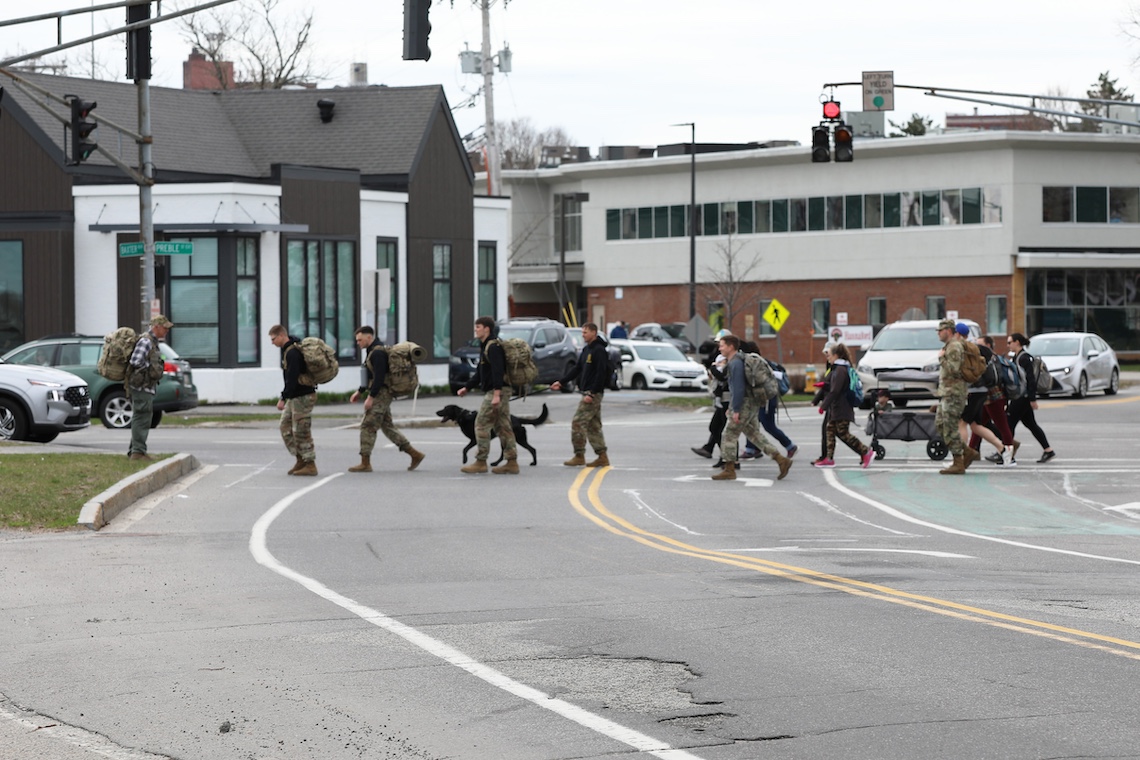
Other memories may fade over time, but not Christopher Gelineau’s face. Twenty years after he died in Iraq, his face remains as vivid as ever in the minds of his friends.
“He had a heck of a smile that you can’t forget. He’s one of those people,” said San Pao.
The desire to share Gelineau’s story with a new generation brought Pao to the University of Southern Maine’s Portland campus for a military-style ruck on April 19. The University’s Military-Affiliated Student Hub (MASH) organized the event to mark the 20th anniversary since Gelineau’s death.
Gelineau served part-time in the Maine Army National Guard while also attending USM. Then the Iraq War broke out. As the fighting intensified, his unit was deployed into the warzone. Gelineau died on April 20, 2004, when his convoy came under attack outside of Mosul. He was 23 years old.
Pao served with Gelineau in the 133rd Engineer Battalion. They both arrived in Iraq as specialists. After his death, Gelineau received a Purple Heart and a promotion to sergeant. Pao retired as a staff sergeant.
Coming home without his friend was hard for Pao. The lessons he learned while dealing with his pain laid the foundation for a new career as a clinical therapist. He sees events like the memorial ruck as part of the healing process for himself and other veterans.
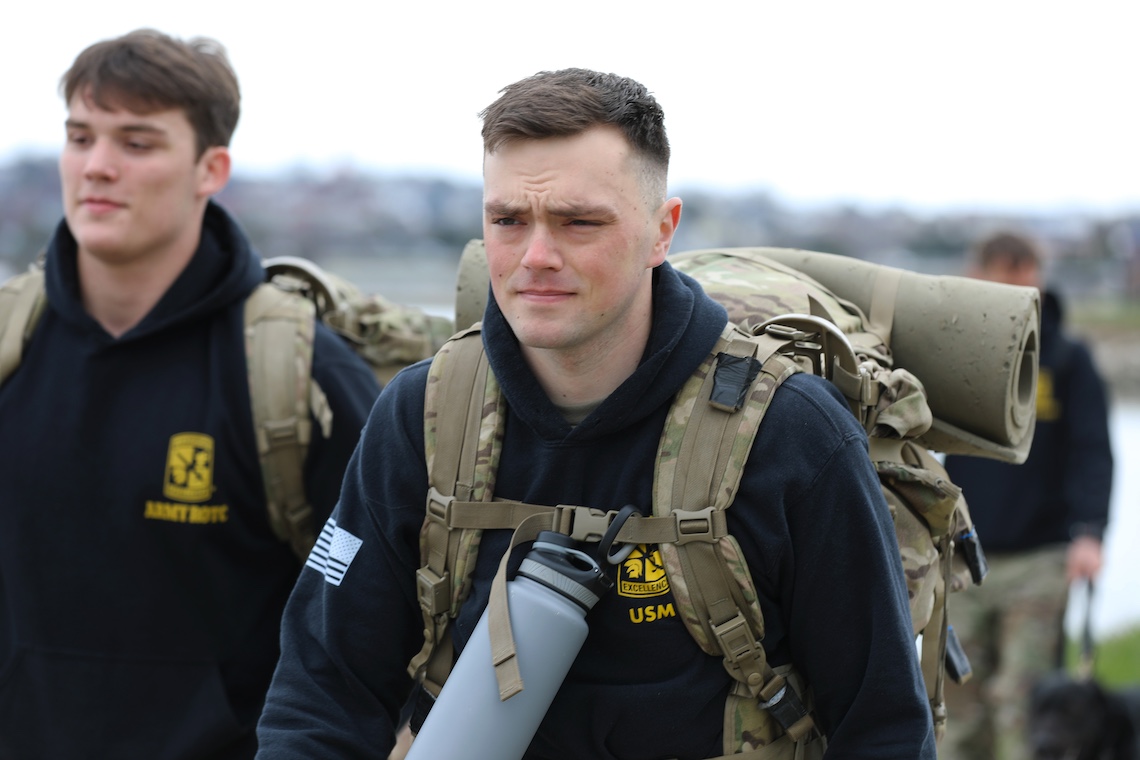
“How do we learn? How do we live? How do we cope?” Pao said. “There’s no right way or wrong way. There’s many ways of doing it. We just have to keep on living. Living for others, and live for yourself.”
A ruck might be just the thing for veterans like Pao who miss the structure and comradery of military life. The heavy backpacks that soldiers wear are called rucks. The word also became synonymous with the long marches that soldiers endure while shouldering so much weight.
USM’s ruck was more casual. Backpacks were optional, and the distance was limited to four miles. Walkers set off from USM’s McGoldrick Center, traversed the full length of the scenic trail around Back Cove, and finished where they began.
At the front of the pack were several members of the Army Reserve Officers’ Training Corps (ROTC) at USM. They were easy to spot by their camouflage uniforms, complete with fully laden packs on their backs. One pack was especially heavy. Beau Vidal volunteered to carry an 11-pound stone engraved with Gelineau’s name.
Gelineau’s stone and others like it come from the Summit Project. The nonprofit organization was formed to memorialize armed services members from Maine who died in the line of duty. The stones that it creates are loaned out for public events to drive home the weight of the sacrifice they represent.
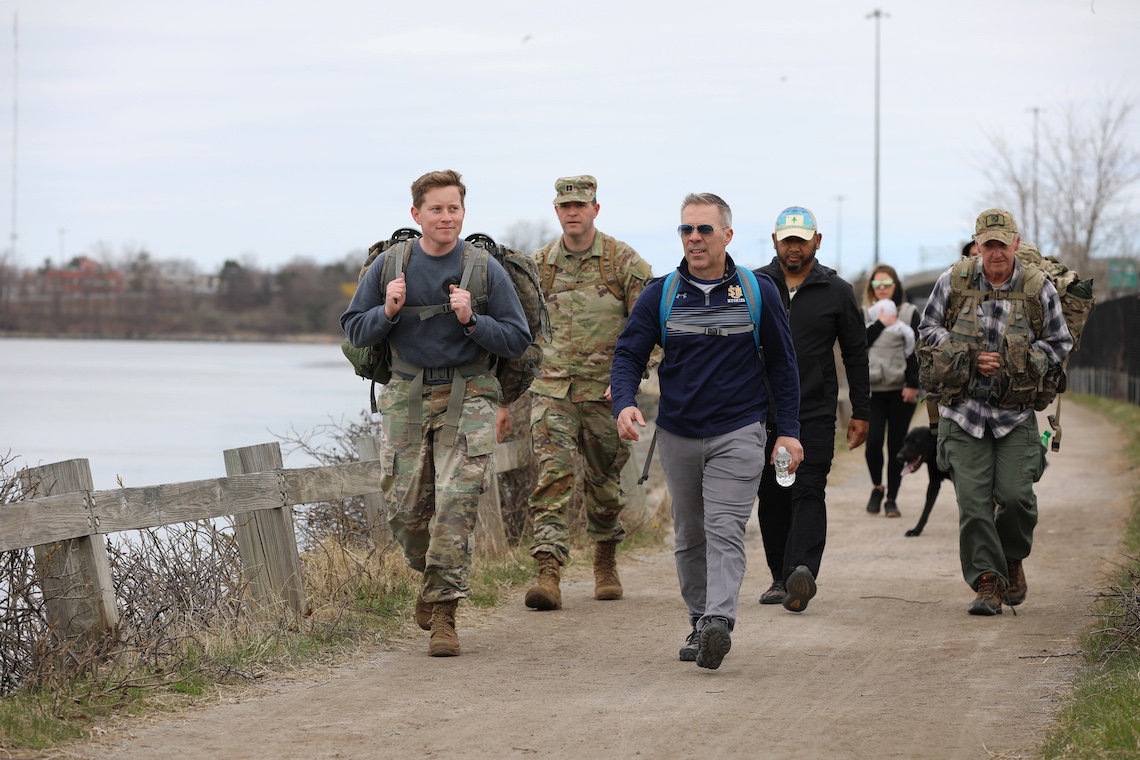
Ruck organizers originally offered the stone to San Pao. He instead suggested giving the stone to a ROTC member as a way to connect them to Gelineau. Vidal was in middle school when Gelineau died. He’s now days away from receiving his bachelor’s degree in Health Sciences.
As the ruck started, Pao made a beeline for Vidal. They walked in lockstep for the next few minutes. Vidal listened intently as Pao explained how much the name on the stone meant to him.
“Anyone who’s given their life for this country, it’s meaningful,” Vidal said. “To carry a little remembrance for that is a big deal.”
The ruck also attracted walkers like Rodney Mondor who knew Gelineau outside of the military. Mondor is USM’s Dean of Students, but during Gelineau’s time on campus, he worked as an advisor in the Office of Student Affairs.
“To this day, 20 years later, I remember that smile,” Mondor said.
He crossed paths with Gelineau through their involvement in a program to help new students get settled. As an upperclassman, Gelineau shared the usual tips about adapting to campus. But he also went a step further.
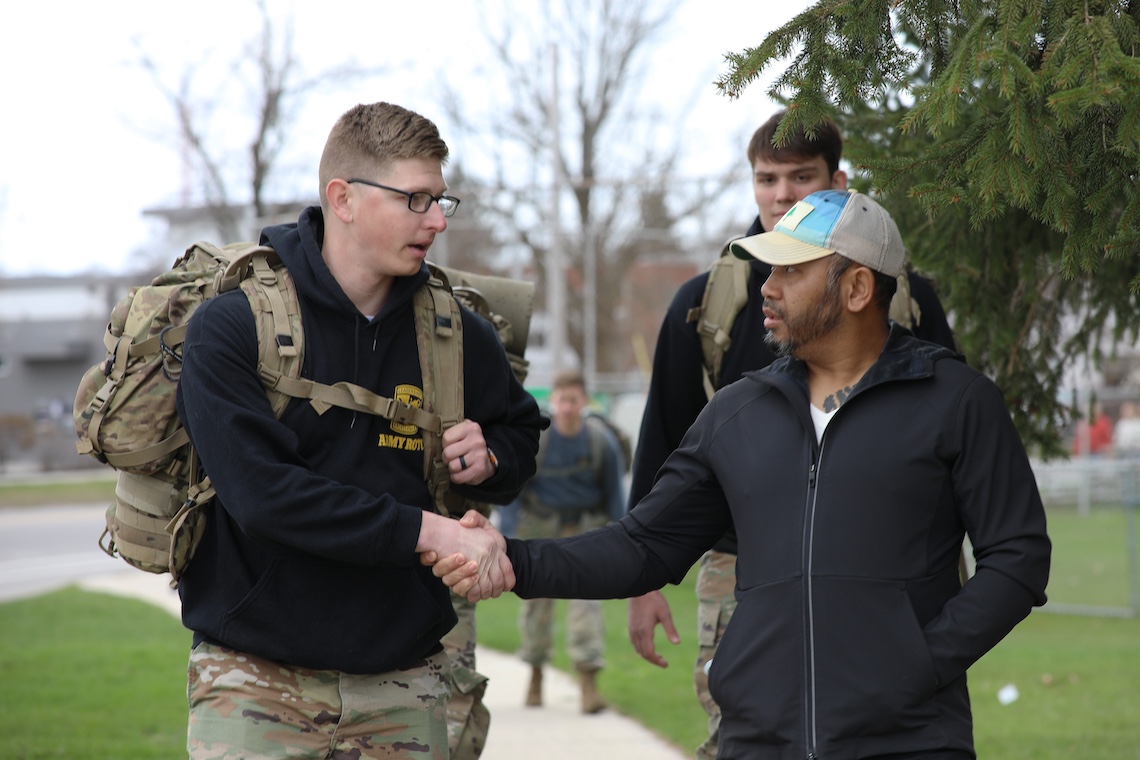
Gelineau was only a semester away from completing his degree program in Information and Communications Technology when he was deployed. Seeing that fellow students were struggling with their assignment to record a presentation, Gelineau worked into the night to help them. Mondor gives credit to Gelineau that he never asked for himself.
“The thing about Chris was that he was a quiet leader,” Mondor said. “He was one of those you probably would not have picked out of a crowd. But what he did was just incredible. He was very giving of his time.”
USM was also important to Gelineau as the place where he met his wife, Lavinia. She earned degrees in Business and English. Christopher died two weeks before the 2004 Commencement ceremony. Lavinia accepted his diploma, as well as her own. A year later, she had just begun a career as a teacher when she also died.
The ruck was dedicated specifically to Christopher, but a further honor awaited both him and Lavinia. While gathered for lunch after returning to campus, the walkers learned about the new Christopher and Lavinia Gelineau Memorial Scholarship.
The scholarship will go to two students each year who are pursuing degrees in Christopher and Lavinia’s areas of academic interest. Applicants who served in the Maine National Guard will receive extra consideration.
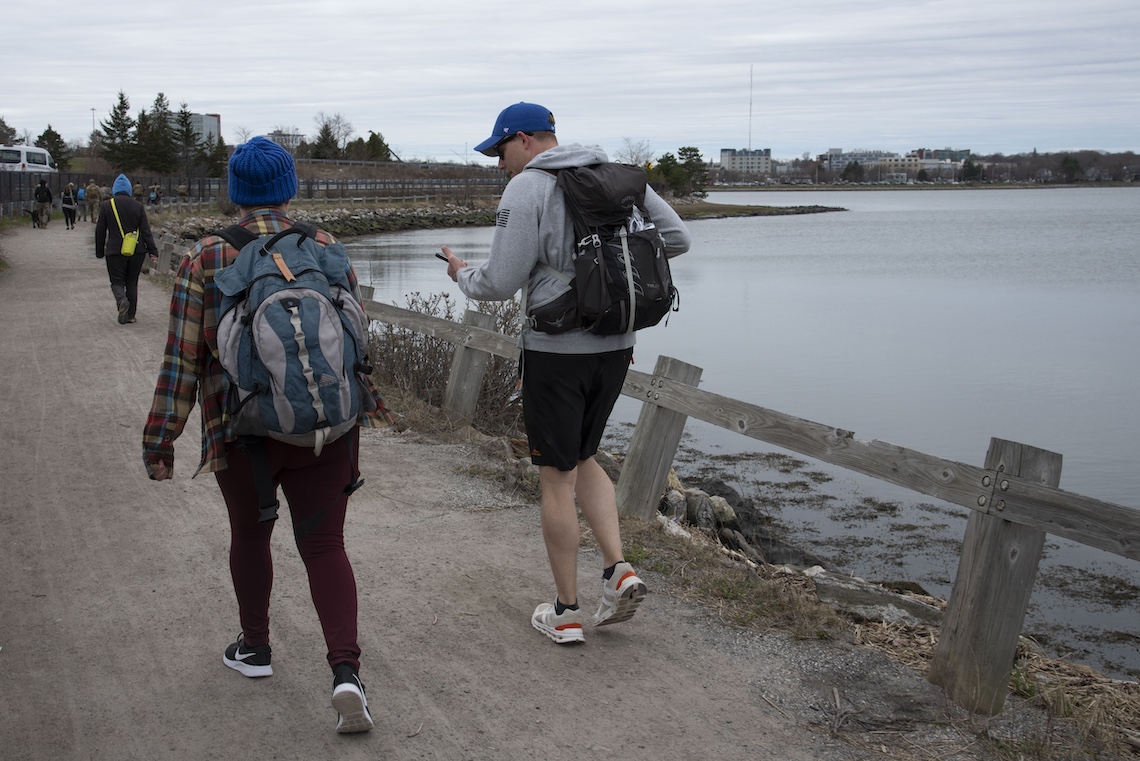
“National Guard doesn’t mean you serve one weekend a month, two weeks a year. You can be called up and deployed at any time just as Chris was,” said MASH Director Lorrie Spaulding. “That’s important for us to remember. This isn’t something that people are playing at. They don’t dress up in their cammies, they don’t go and play soldier. This is a commitment.”
Spaulding credits MASH Coordinator Katherine Reynolds with organizing the ruck. It was important to Reynolds for people who knew Gelineau to be involved. San Pao was at the top of her call list. She knew it was a sensitive request. His only question in response was when to show up.
“I am honored to do this. I am honored to be here. I’m honored to help live his life, his memories, his spirit after the fact,” Pao said. “A lot of us will be forgotten. I want Chris to be remembered. I want him to be remembered for who he is, who he was, and what we can become afterwards.”

